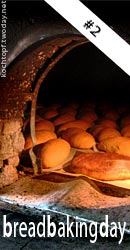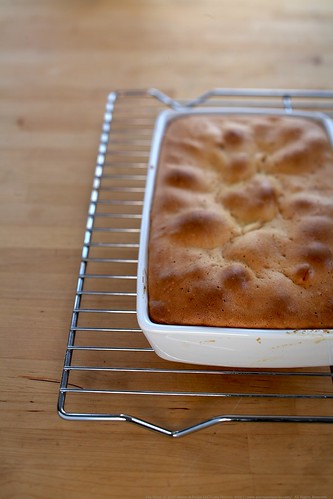June 21, 2007
Close to Home
By LINDSEY CRITTENDEN
I WAS initiated young into the cult of clutter. Opening a drawer in my childhood kitchen meant finding birthday cards sticky from a leaking pen, a recipe for moussaka never made, bits of yarn and a Hot Wheels car missing a door. Occasionally, my mother attempted organization by topic (Vacation Ideas, Children’s Vaccinations, Restaurants to Try), but she never got hanging files, so the folders slipped and slid over one another. Dad had a secretary at work to organize his papers, and at home he directed seasonal weekend purges that inevitably threw Barbies out with the bath water.
Years later, my mother continued to reprimand him for discarding my Malibu Skipper and Francie. She didn’t care about the potential “fortune he’d thrown away,” as she put it; it was the principle of the matter. How could he have tossed his daughter’s dolls? After all, she had kept her favorite, circa 1934: a porcelain creature with patches of scratchy woolen hair and hinged joints that made her heavy limbs flop creepily against my skin when I picked her up.
I’d be different, I vowed. And I was. Once I was living on my own, I favored a streamlined Scandinavian aesthetic, relegating clutter to the past, to my childhood bedroom with its Charlie the Tuna lamp and dusty seashells. And yet my vow was based — however unconsciously — on the knowledge that those items would stay with Mom and Dad, who would always be there.
And then, a year ago, I bought my first home. On moving day I stood at the top of the stairs to direct the flow of boxes and furniture, most of which I’d acquired during 20 years of apartment living but much of which I’d inherited from my parents, who had both died during the past few years. By 4 p.m. I was toasting the view of San Francisco Bay with a glass of wine and fantasizing about which object would go where. I imagined unpacking and arranging as the most intentional and pleasing of tasks, in which I would lovingly place each treasure in just the right spot. Finally, after two decades of rentals, I had a place that was all mine, to do with as I pleased.
But first, I had a deadline for a book. The boxes would have to wait. I cleared enough space for a laptop and a cup of coffee and a pathway to the bed, shower and stove, and got to work.
For two months, I lived in the present, happily, productively, eight to nine hours a day. The boxes served as background, neither impediment nor distraction, just something I’d turn to in time. I made my deadline and went away for a few weeks.
When I returned, the boxes were still there. But now they gave off the stink of Sisyphean obligation. Waking in the morning to the prospect of unpacking, I’d feel torpor drape over me like a lead apron. I’d lift an item — a teacup, a needlepoint pillow reading “This Mess Is a Place” — and aimlessly wander the room before placing it back in the box. In my parents’ cupboards, three generations of teacups had felt earned, necessary, part of the past I wanted to keep. But now they felt like more than I knew what to do with.
One day I turned to Photos & Stuff, six boxes labeled in my father’s chicken scratch. I reached for the box cutter, but the cardboard was so soft that the flaps almost fell apart in my hands as I started sneezing from the dust. These were old boxes, the contents in no particular order.
The year of my birth seemed as good an organizational device as any, so I made two piles, Before 1961 and After 1961, and draped a Hefty bag over a chair for trash. Most decisions came easily. I didn’t need two pictures of blurry pink bougainvillea against a whitewashed wall, or 10 shots of my nephew with his chubby fist in his first birthday cake. But the accumulated glimpses — Mom’s smile, Dad’s eyes crinkled in laughter — added up and, after 10 minutes, I was worn out.
I was halfway through a roll from a trip my parents had taken to Grand Teton National Park in 1995, flinging scenic vista after scenic vista into the Hefty bag, when my hand stopped. A shot of a wooden chapel on the edge of a field glorious with lupine. I recognized the scene from a moment of family lore: in 1970 my brother, then 3, had walked into that empty chapel to recite the Lord’s Prayer without prompt. He’d died in 1994, the year before Mom returned to the spot and took the photo.
I wasn’t just the person deciding which pile it went into; I was the only person alive who understood why it had been taken in the first place. If I threw it away, I was throwing away layers of emotion and association and identity. And if I kept it, well what then? The clutter of my childhood had never gone away; it had just been packed up to land smack-dab in my present, where I had to deal with it alone. Sure, I’d bought the place and chosen the paint colors and the fabric to reupholster dad’s favorite chairs, but suddenly, untenably, my space no longer felt all mine. I threw the Hefty bag in the trash and shoved the Photos & Stuff back in the hall closet.
A week later my friend Eva came over, and we pulled everything out of the hall closet, including Photos & Stuff (as well as a television remote I’d given up for gone and 40 years of Christmas ornaments and the backpack found in my brother’s car after he died). With Eva at my side, I opened a box with curiosity more than dread and handed her my brother’s obituary, my parents’ wedding invitation.
“Your brother was so handsome,” she said. I reached in again, lifting out a manila folder on which Mom had written my name; in it, she’d kept every clipping from every reading I’d ever given. And then my fingers brushed something furry: the needlepoint pillow reading “This Mess Is a Place.” I must have stashed it here that day I found it. Now I recalled it hanging from a cabinet door in my childhood kitchen. I held it up, making a face.
Eva met my eyes. She too had lost both parents. She too was the only surviving child.
“I have my father’s polyester pajamas,” she said. “I can’t bear to throw them out, but what are you supposed to do with blue polyester pajamas? They were the last thing he wore before he went to the hospital.”
I looked around the room as if for the first time. Not the way I saw it when the real estate broker showed it to me, but with the boxes finally cleared away. My mother would never see how good her farm table looked on my new rug, but there it sat. My father had never climbed the stairs to exclaim, “This is wonderful, honey,” although I’d heard his voice say that many times. My brother would never stand by my side on the deck, pointing at the north tower of the Golden Gate Bridge and explaining just how he made it to the top.
“Come to Colorado next summer,” Eva said. She and her husband had recently bought an adobe farmhouse in the mountains. “Bring your photos. I’ve got my mother’s. We’ll go through them. We’ll tell each other the stories.”



